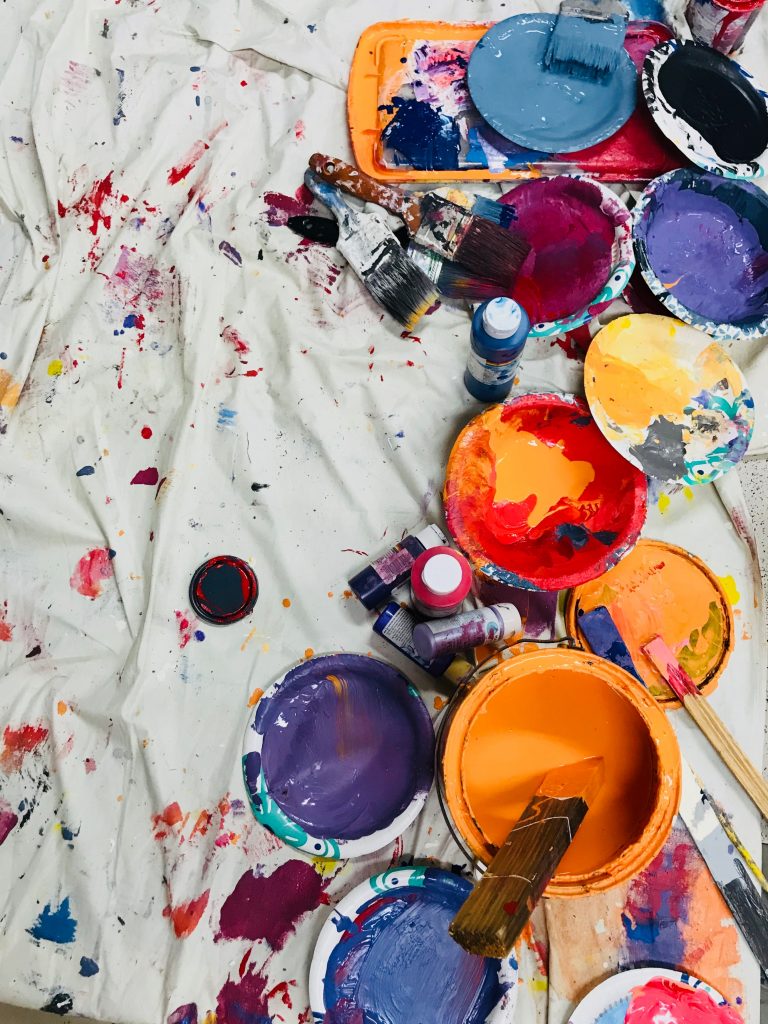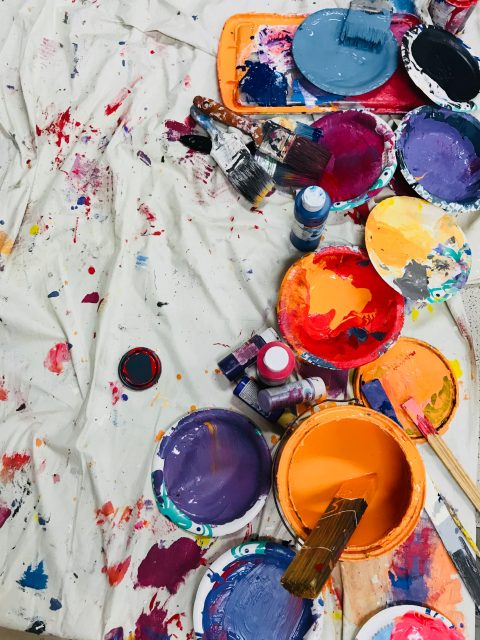
Unsurprisingly, lockdown has stimulated our appetites for home improvement. And this is a good thing for our mental and emotional wellbeing, as our home environment has a huge role to play in that.
Colour in particular has a significant impact on our moods and on our rooms. For that reason, we need to choose our colour palettes carefully and not be overly influenced by what’s trending on Instagram.
When selecting colours for each space in our home, we need to consider the function of that space. Who is using it, for what purpose(s) and at what time(s) of the day? And we also need to consider what direction the space is facing.
The Visual Effects of Colour in our Interior Spaces
So most people probably know that light colours reflect light and dark colours absorb them. Hence, to make a room feel lighter and brighter, paint it a pale colour. And paint it a dark colour to make it feel cosier.
There is another element that is lesser well know: light coloured walls tend to visually recede from us and darker ones appear to move towards us. So a whiter wall will feel farther away from us than a darker one.
And when we can’t physically change the size of a space we use various tricks to play with how the space is perceived. The most impactful of these is colour, and the conventional application of this wisdom tends to be along these lines:
- If the room is small paint it white, or at least a pale colour.
- If the room is cavernously large, play with darker shades to visually shrink the space and make it feel less cavernous.
These days designers are becoming increasingly fond of bucking this convention however, when it comes to small rooms. Particularly if the small room isn’t south-facing and so is only bright for a small portion of the day, if at all. It’s increasingly popular now to “embrace the darkness” and instead of trying to make a small dark room feel lighter and larger, to work with its natural leanings and opt for making it feel invitingly cosy instead.
It’s an option! If your room is south-facing though and you’re craving a feeling of lightness and spaciousness, then do work with white or pale colours.
And if you’re looking for a light effect, choose finishes with higher sheen as they will also help to bounce the light around the room. (And add mirror and glass to increase light reflection.) If you’re going for the cosy option, opt for more matt and less sheen.
The Effect of Compass Direction on Colour
The direction a room is facing is an important consideration in choosing colour, because the direction will influence the quality of light. And the light will affect how the colour appears on the walls.
Here in the northern hemisphere the brightest and warmest light comes from the south. A south-facing room will be bright for most of the day. A north-facing room will almost always be relatively dull—even if you paint it white.
Warm colour is what you will experience in a south-facing room, an east-facing room in the morning or a west-facing room in the evening. Cool colour is found in north-facing rooms, east-facing in the evenings and west-facing in the mornings.
And the warmth (or lack of it) will affect the colours on the walls.
Colours themselves sit on “warm” and “cool” ends of the colour spectrum. Greens, blues and purples that sit closer to blue than red (eg violet) are cooler. They can be very calming to the psyche, but when used in cooler light they can feel a little clinical and not that inviting—at least when you’re using the pure colour or a lighter tint of it. When you start to move towards darker shades however, then these colours can start to add more cosiness.
Reds, yellows, oranges, purples that sit closer to red than blue, and greens that sit close to yellow are all warmer colours. They will all evoke a more vibrant feeling than cooler colours. However, in strong saturations they will be intense and are probably best used in transitional spaces, such a hall or downstairs loo. They can work well in kitchens and dining rooms too if you want a stimulating atmosphere. In living rooms and bedrooms though, opt for paler tints rather than strong versions of the colour.
Greens and blues will feel more clinical in cooler light and more relaxing in warmer light. So they can be great choices in living and bedrooms if the light is warm at the time that we use them—morning in the bedroom (to encourage us to get up and embrace the day) or evening in the living room (to enhance chillaxability). Naturally we also want our bedroom to feel relaxing and not clinical in the evening time, and this can be achieved by choosing warmer lightbulbs for reading and ambient lamps.
Because of this interplay of light, it’s important to buy tester pots before you invest your time and money in the full paint job! Put swatches on every wall in the room, because the colour will look different on each wall. And check it at different times of day, because it can potentially look like a totally different colour between morning and evening. Give it a few days of examining a few options before you make the call. And choose the colour that gives the effect you want for the time of day you will be using the space.
Colour Psychology
In addition to the effect of light in a room, we also want to consider how we ourselves want to feel when spending time in it.
As mentioned above, both green and blue can be very calming to the psyche. But you’re not limited to these choices for your relaxation quarters. Opting for paler tints of your favourite colour will also help you wind down.
For concentration and focus, look at darker blues verging on navy.
For a cheery effect look at oranges and yellows. Beware of red as it can be a tad too stimulating. In addition to stimulating passion, it can also stimulate tempers so it’s best kept to a minimum in our homes. If you love it and really want it, opt for a darker shade (like burgundy) in the dining room, or a paler tint (like pink) in the bedroom.
Orange can be a good choice in the kitchen and dining room, stimulating appetite and conversation.
And yellow can feel inviting and welcoming in the hallway, or put us in a positive frame of mind in a breakfast room. With both yellow and orange though, the effect can be a bit too stimulating depending on where you land on the colour spectrum. Better to go with a paler tint or a darker shade (like mustard) than a pure sunny yellow, which might give some people a headache if they spend too long in the space.
You gotta love it!
While holding the factors above in mind, the most crucial thing of all is that you love the colour. Don’t put navy in your home office because it helps concentration if the affect that colour has on you is to feel gloomy. Look for a shade of a colour that resonates better with you. Maybe a teal blue instead of navy. Or maybe you need the walls to be blank white spaces so you’re not distracted.
The psychology guidelines reflect what is generally found to be true for most people. But we are each our own person and we might personally buck the trend. These are a good starting point, but remember to cross-reference them with your own preferences.
If your home is going to make your heart sing, you need your colour palette to harmonise with that intention!
So to recap, the main things to consider when choosing your paint colours have nothing to do with the current Colour of the Year. Get clear on:
- What kind of visual impact you want to create in the room
- What kind of impact you want the room to have on your mood
- What effect the light will have on colour choices at the time of day the room will be in use
And then play with the appropriate tints and shades of the colours you love.
Happy paint selecting. And if you’d like some help choosing your color palette https://hildacarroll.com/colour-consultation/I offer consultations to support you with this.
You might also enjoy:
Making Small Spaces Feel Bigger while Breaking the Colour Rules.
